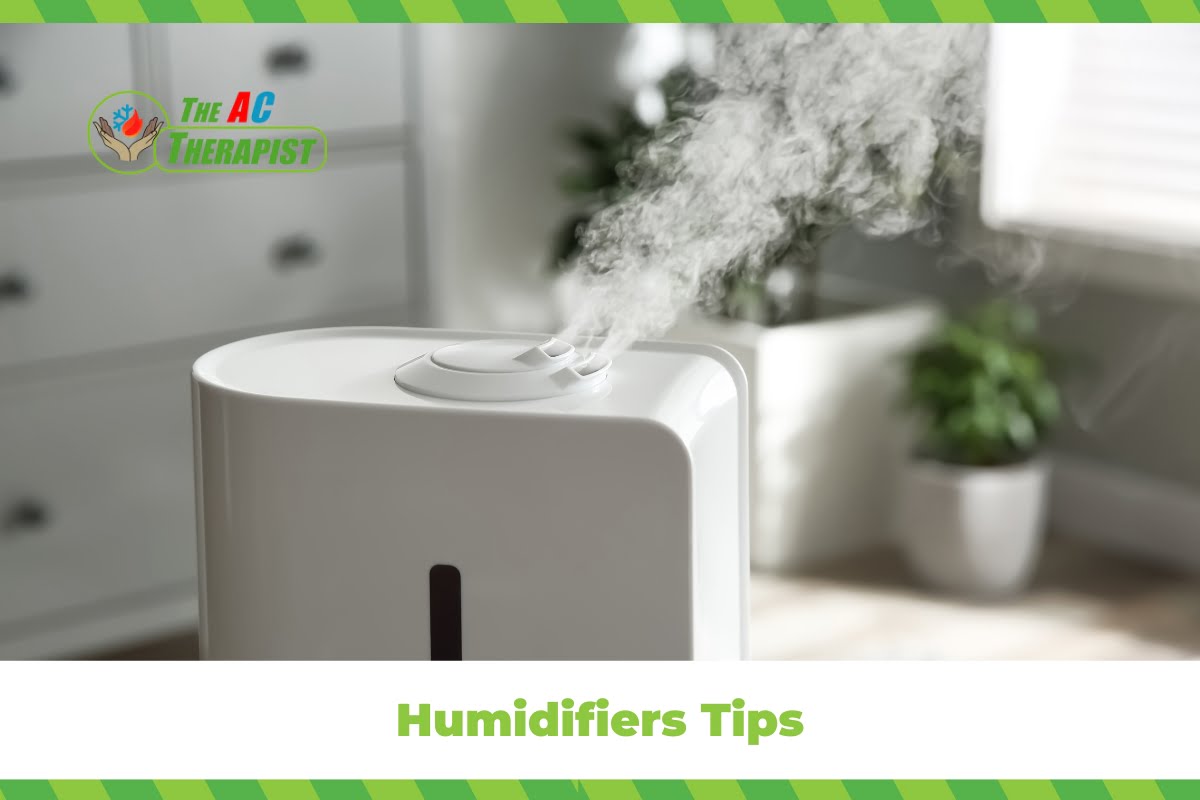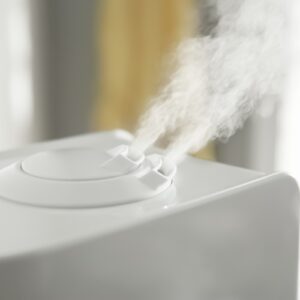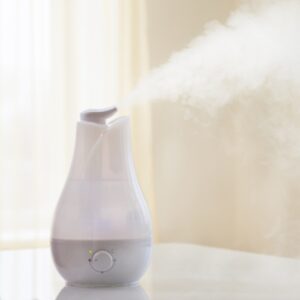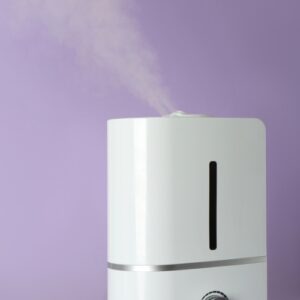Humidifiers Tips
In the quest for optimal indoor comfort and health, maintaining the right humidity level is just as crucial as regulating temperature. Too little moisture in the air can lead to many discomforts and health issues, from dry skin and irritated respiratory tracts to increased susceptibility to colds and infections. On the other hand, excessive humidity can foster mold growth, dust mites, and other allergens. This delicate balance underscores the importance of effective humidity control within our living and working environments. Enter the humidifier—a simple yet powerful tool that plays a pivotal role in achieving this balance, especially during the dry winter months or in naturally arid climates.
But the discussion doesn’t end with the decision to use a humidifier. There’s a vital aspect often overlooked: the type of water it uses. The choice between tap water, distilled water, and other forms has significant implications for both the efficiency of the humidifier and the quality of air it produces. Moreover, when we consider the integration of humidifiers with Heating, Ventilation, and Air Conditioning (HVAC) systems, the stakes are raised even higher. The synergy between these systems can greatly enhance indoor air quality and personal well-being.
This blog post aims to delve deep into the world of humidifiers within the context of HVAC systems, with a particular focus on the debate surrounding the use of distilled water. We’ll explore the mechanics of humidifiers, their benefits, the role of HVAC systems in managing indoor humidity, and the compelling reasons distilled water is often recommended for use in humidifiers. By understanding these dynamics, you can make informed decisions about enhancing the air quality and comfort of your indoor environments. Whether you’re a homeowner, a health-conscious individual, or a professional navigating the complexities of HVAC systems, this guide is designed to provide valuable insights into achieving optimal humidity levels for a healthier, more comfortable living space.
Understanding Humidifiers
Humidifiers play a critical role in managing indoor air quality and comfort. By adding moisture to the air, they address the adverse effects of dry indoor environments, which can be particularly prevalent during winter months or in arid regions. Understanding how humidifiers work and the different types available is key to choosing the right one for your needs.
What Are Humidifiers?
A humidifier is a device designed to increase humidity (moisture) in a single room or an entire building. In the home, point-of-use humidifiers are commonly used to humidify a single room, while whole-house or furnace humidifiers, which connect to a home’s HVAC system, provide humidity to the entire house.
Types of Humidifiers
There are several types of humidifiers, each operating on different principles:
- Ultrasonic Humidifiers: These use ultrasonic vibrations to produce a fine mist of water, which is then expelled into the air. They are remarkably quiet, making them suitable for use in bedrooms.
- Evaporative Humidifiers: The most common type, these humidifiers use a fan to blow air through a wet wick, filter, or belt, evaporating the water into the air. They are self-regulating, as the humidity of the room determines the evaporation rate.
- Steam Vaporizers: These boil water, releasing steam and moisture into the air. They can be more hygienic since the boiling process kills germs, but they need to be used with caution to avoid burns.
- Impeller Humidifiers: These use a rotating disk to fling water at a diffuser, breaking the water into fine droplets that are released into the air. They are generally quieter and more energy-efficient.
Benefits of Using a Humidifier
The benefits of using a humidifier are extensive and touch on health, comfort, and the preservation of the home:
- Health: Humidifiers can alleviate the symptoms of dry skin, nose, throat, and lips. They also help relieve some of the symptoms caused by the flu or common cold by keeping the respiratory system moist.
- Comfort: Moist air feels warmer than dry air, so humidifiers can make a room feel more comfortable during colder months, potentially helping to reduce heating bills.
- Preservation: By maintaining optimal humidity levels, humidifiers help preserve the integrity of wooden furniture, musical instruments, and anything else that can be damaged by too much dryness.
HVAC and Humidity Control
In the realm of indoor air quality and comfort, the relationship between HVAC (Heating, Ventilation, and Air Conditioning) systems and humidity control is paramount. HVAC systems do more than just regulate temperature; they play a crucial role in maintaining the ideal humidity levels within indoor environments. This balance is vital for creating a comfortable, healthy living space and for protecting the structural integrity of buildings and the longevity of their contents.
Role of HVAC in Humidity Control
HVAC systems are designed to achieve a comfortable indoor environment, and one of their roles is to manage the level of humidity. The process involves either adding moisture to the air (humidification) during dry conditions or removing excess moisture (dehumidification) during more humid conditions. This is accomplished through various components of the HVAC system, such as air conditioners, which can remove moisture from the air during the cooling process, and humidifiers, which can be added to HVAC systems to introduce moisture when needed.
Integrating Humidifiers with HVAC Systems
Integrating humidifiers with HVAC systems allows for the precise control of indoor humidity levels, ensuring that they remain within a range that is comfortable for occupants and conducive to the preservation of the building’s materials. There are several ways to integrate humidifiers into HVAC systems:
- Whole-House Humidifiers: These are directly installed into the HVAC system and work in tandem with the heating and cooling processes to distribute moisture evenly throughout the entire home. They draw water directly from the home’s water supply and introduce humidity into the air as it circulates through the HVAC system.
- Bypass Humidifiers: These are installed on the furnace’s return air duct and use the air handler’s blower to move air through a water panel, adding moisture to the air circulating through the system.
- Fan-Powered Humidifiers: Similar to bypass humidifiers but with their own fan that blows air across the water panel, they can produce more humidity more quickly than bypass models.
- Steam Humidifiers: These generate steam by boiling water and then inject that steam into the ductwork. This type can work independently of the furnace, allowing for precise humidity control regardless of whether the heating system is running.
Benefits of Proper Humidity Control through HVAC
Proper humidity control through an HVAC system has numerous benefits:
- Health and Comfort: Maintaining the right humidity level can reduce the incidence of respiratory ailments and allergic reactions by mitigating the growth of mold, bacteria, and viruses. It also prevents dry skin and irritation.
- Energy Efficiency: Humid air feels warmer than dry air at the same temperature, potentially allowing for lower thermostat settings in the winter and reducing heating costs.
- Preservation of Property: Proper humidity levels help preserve the integrity of wood floors, plaster, paint, furniture, and artwork, which can be damaged by either excessive dryness or moisture.
Managing indoor humidity is a critical aspect of creating a comfortable and healthy indoor environment. Integrating humidifiers with HVAC systems offers a seamless solution to achieving and maintaining optimal humidity levels, underscoring the importance of considering both temperature and moisture in holistic indoor air quality management. As we delve into the specifics of water usage in humidifiers, particularly the advantages of using distilled water, the interconnectedness of these systems and their impact on overall indoor environmental quality becomes even more evident.
The Water Dilemma for Humidifiers
The water used in humidifiers is a critical factor that influences not only the performance and maintenance of the device but also the air quality and health of the indoor environment. Choosing the right type of water to use in a humidifier is a common dilemma faced by many users. The debate primarily centers around the use of tap water versus distilled water, with each choice presenting its own set of advantages and challenges.
Types of Water Used in Humidifiers
- Tap Water: The most readily available and cost-effective option for many, tap water contains minerals and impurities that can have varying effects on humidifiers and air quality.
- Distilled Water: This is water that has been boiled into vapor and then condensed back into liquid in a separate container. Distilled water is free from minerals and impurities.
- Demineralized Water: Similar to distilled, demineralized water has had minerals removed through a different process, such as ion exchange.
Problems with Using Tap Water
While tap water is convenient and inexpensive, it comes with several downsides when used in humidifiers:
- Mineral Buildup: The minerals in tap water can accumulate in the humidifier, leading to scaling on the heating elements and other parts. This buildup requires regular cleaning and can shorten the lifespan of the device.
- White Dust: When tap water is used in ultrasonic or impeller humidifiers, the minerals can be released into the air along with the mist. This results in “white dust” settling on furniture and other surfaces.
- Potential for Bacterial Growth: Tap water may contain microorganisms that, when dispersed into the air, can pose health risks, especially for individuals with respiratory issues.
Why Distilled Water is Recommended
Given the problems associated with tap water, distilled water is often recommended for use in humidifiers for several reasons:
- No Mineral Buildup: Since distilled water is free of minerals, it significantly reduces the risk of mineral buildup within the humidifier. This leads to easier maintenance and a longer lifespan for the device.
- No White Dust: The absence of minerals in distilled water means that no white dust is produced, ensuring cleaner air and surfaces in the humidified space.
- Reduced Bacterial Risk: Distilled water is less likely to contain bacteria or other microorganisms, reducing the risk of air quality-related health issues.
The choice of water for humidifiers is more than just a matter of device maintenance; it directly impacts the quality of the indoor environment and the health of its occupants. While distilled water might require a bit more effort or cost to obtain, the benefits it offers in terms of humidifier performance and indoor air quality make it a worthwhile choice. By understanding the implications of different types of water on both the humidifier and the indoor environment, users can make informed decisions that enhance their comfort, health, and the longevity of their humidification devices.
Practical Tips for Humidifier Maintenance
Maintaining your humidifier is essential for ensuring it operates efficiently and safely, prolonging its lifespan while also safeguarding your indoor air quality. Regular care prevents the buildup of minerals and the growth of mold and bacteria, which can be harmful to your health. Here are practical tips for maintaining your humidifier, regardless of the type you use:
Regular Cleaning
- Frequency: Clean your humidifier every 1-3 days of use. Regular cleaning is crucial to prevent the growth of microorganisms and mineral buildup, especially if you’re not using distilled water.
- Method: Refer to the manufacturer’s instructions for specific cleaning guidelines. Generally, disassemble the humidifier, remove any mineral deposits with a soft brush or cloth, and disinfect the parts with a solution of water and white vinegar or a bleach solution (following a 1:1 ratio of bleach to water). Rinse thoroughly to ensure no cleaning solution remains.
Changing the Water Daily
- Importance: Always empty the tank and refill it with fresh water daily. Stagnant water is a breeding ground for bacteria and mold, which can be dispersed into the air the next time the humidifier is used.
- Water Type: Use distilled water to minimize mineral deposits and microbial growth. Although distilled water can still harbor bacteria if left standing, its initial purity helps maintain cleaner operation.
Monitoring Humidity Levels
- Use a Hygrometer: It’s important to monitor room humidity levels to ensure they remain within a healthy range (ideally between 30% and 50%). Excessive humidity can encourage mold growth, dust mites, and other allergens.
- Adjust Usage Accordingly: If humidity levels exceed this range, reduce humidifier use or adjust settings if your model allows. Conversely, increase use if the air is too dry.
Filter Replacement and Care
- Follow Manufacturer Recommendations: If your humidifier has a filter, change it according to the manufacturer’s recommendations, or more frequently if you notice buildup.
- Type of Water Affects Filter Life: Using distilled water can extend the life of your filter by reducing mineral deposits.
Choosing the Right Humidifier for Your Needs
- Consider Room Size: Make sure the humidifier’s output matches the size of the room where it will be used. An oversized humidifier can contribute to excessive humidity, while an undersized one won’t adequately increase moisture levels.
- Ease of Maintenance: Choose a model that is easy to clean and maintain. Features like a wide tank opening can make cleaning simpler.
Preventive Maintenance
- End-of-Season Care: At the end of the humidifier season (usually spring), perform a thorough cleaning and dry the unit completely before storage. This prevents the growth of mold and bacteria during the off-season.
- Storage: Store the humidifier in a dry place. Remove and discard any used filters, and clean the device thoroughly before putting it away.
Regular and thorough maintenance of your humidifier is key to ensuring it functions properly and contributes to a healthier indoor environment. By following these practical tips, you can enjoy the benefits of your humidifier without the drawbacks of poor air quality or device malfunction.
Clearing the Air: The Essential Guide to Using Distilled Water in Your Humidifier
As The AC Therapist, your comfort and health are our top priorities, and that extends to the smallest details of your home’s air quality—right down to the type of water you use in your humidifier. Through this guide, we’ve navigated the intricacies of humidifier maintenance and the pivotal role of distilled water in ensuring your device operates efficiently, safely, and in the best interest of your health.
Using distilled water in your humidifier isn’t just a recommendation; it’s a proactive step towards maintaining a pristine indoor air environment. It prevents the buildup of minerals, wards off undesirable white dust, and significantly reduces the risk of microbial growth. This simple yet effective practice can extend the lifespan of your humidifier, ensuring it continues to enhance the quality of your indoor air without introducing harmful elements.
At The AC Therapist, we understand the importance of a holistic approach to indoor air quality. It’s not just about temperature control; it’s about creating a healthy, comfortable environment that supports your well-being. Whether it’s through maintaining optimal humidity levels, choosing the right HVAC solutions, or offering advice on the little things that make a big difference, we’re here to ensure your home remains a sanctuary of comfort and health.
Remember, the care you give to your humidifier and the quality of water you use are reflections of the care you give to yourself and your loved ones. Embrace distilled water as a clear choice for your humidifier, and breathe easier knowing you’ve taken a significant step towards a healthier home. Trust The AC Therapist to guide you through every aspect of your home’s air quality management, because your comfort, your health, and your peace of mind are always our highest mission.













